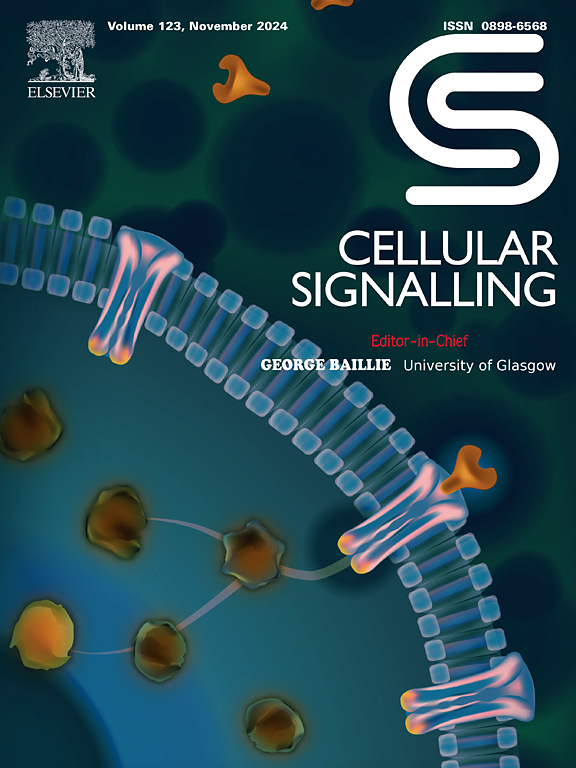Leptin attenuates diabetic cardiomyopathy-induced cardiac remodeling via regulating cGAS/STING signaling and Opa1-mediated mitochondrial fusion
IF 4.4
2区 生物学
Q2 CELL BIOLOGY
引用次数: 0
Abstract
Purpose
This investigation seeks to elucidate the contribution of leptin to the pathogenesis of diabetic cardiomyopathy (DCM).
Methods
Mice were rendered diabetic through the administration of streptozotocin (STZ). Leptin was delivered via subcutaneously implanted osmotic pumps. Assessments of cardiac performance, hypertrophy, and fibrosis were conducted using echocardiography, Hematoxylin and Eosin (H&E), Wheat Germ Agglutinin (WGA), and Masson trichrome staining. Myocardial apoptosis and oxidative stress were quantified through TUNEL assay and biochemical markers of oxidative stress, including Malondialdehyde (MDA), 4-Hydroxynonenal (4-HNE), and 3-Nitrotyrosine (3NT). Mitochondrial structure was examined using Transmission Electron Microscopy (TEM). Primary neonatal cardiomyocytes were subjected to high glucose (HG) conditions. The fluorescent indicators MitoTracker Green and MitoSOX Red were employed to evaluate mitochondrial morphology and function within the cardiomyocytes.
Results
Mice with diabetes displayed marked cardiac hypertrophy and fibrosis, as indicated by H&E, WGA, and Masson staining. The administration of leptin significantly mitigated the cardiac pathological manifestations in diabetic mice. Leptin increased the expression of Opa1 and enhanced mitochondrial fusion and function in cardiomyocytes exposed to HG. The cGAS/STING signaling pathway may serve as a pivotal intermediary for leptin to facilitate Opa1-driven mitochondrial fusion.
Conclusions
Leptin appears to safeguard against hyperglycemia-induced mitochondrial oxidative damage and DCM by modulating the cGAS/STING signaling cascade and Opa1-mediated mitochondrial fusion. These results propose that leptin could be a promising agent for promoting mitochondrial fusion and preventing diabetes-associated cardiac pathologies.
瘦素通过调节cGAS/STING信号和opa1介导的线粒体融合来减轻糖尿病心肌病引起的心脏重塑
目的探讨瘦素在糖尿病性心肌病(DCM)发病中的作用。方法采用链脲佐菌素(STZ)诱导小鼠发生糖尿病。瘦素通过皮下植入渗透泵输送。采用超声心动图、苏木精和伊红(H&;E)、小麦胚芽凝集素(WGA)和马松三色染色对心脏功能、肥厚和纤维化进行评估。通过TUNEL法和氧化应激生化指标丙二醛(MDA)、4-羟基壬烯醛(4-HNE)、3-硝基酪氨酸(3NT)定量检测心肌凋亡和氧化应激。透射电镜观察线粒体结构。初生新生儿心肌细胞受到高糖(HG)条件。采用荧光指示剂MitoTracker Green和MitoSOX Red评价心肌细胞内线粒体形态和功能。结果H&;E、WGA、Masson染色显示糖尿病小鼠心肌明显肥大、纤维化。瘦素可明显减轻糖尿病小鼠的心脏病理表现。在暴露于HG的心肌细胞中,瘦素增加了Opa1的表达,增强了线粒体融合和功能。cGAS/STING信号通路可能是瘦素促进Opa1驱动的线粒体融合的关键中介。结论sleptin可能通过调节cGAS/STING信号级联和opa1介导的线粒体融合来预防高血糖诱导的线粒体氧化损伤和DCM。这些结果表明,瘦素可能是促进线粒体融合和预防糖尿病相关心脏病变的有希望的药物。
本文章由计算机程序翻译,如有差异,请以英文原文为准。
求助全文
约1分钟内获得全文
求助全文
来源期刊

Cellular signalling
生物-细胞生物学
CiteScore
8.40
自引率
0.00%
发文量
250
审稿时长
27 days
期刊介绍:
Cellular Signalling publishes original research describing fundamental and clinical findings on the mechanisms, actions and structural components of cellular signalling systems in vitro and in vivo.
Cellular Signalling aims at full length research papers defining signalling systems ranging from microorganisms to cells, tissues and higher organisms.
 求助内容:
求助内容: 应助结果提醒方式:
应助结果提醒方式:


